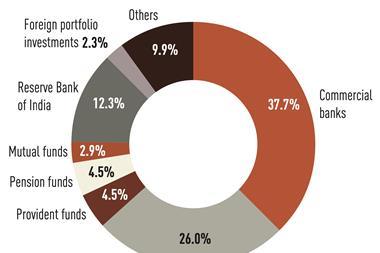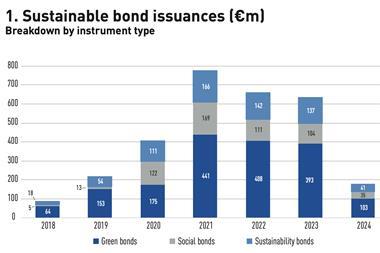Why are there so many special relationships in the corporate world? A special relationship may be defined as one between members of a family, or between a director of a company who does business with another company that the same director steers. The corporate world knows such a relationship as a related party transaction (RPT).
One can well imagine how this may give rise to conflicts of interest, since what people in a special relationship want sometimes is opposite with what is in the best interest of the company. When such conflicts of interest arise, they usually lead to acts that benefit only those who enjoy the special relationship, and not all stakeholders of the company in question.
Put plainly, the risk of special relationships is complicity; that is why Bursa Malaysia requires all deals involving such relationships to be in a company’s best interest, and also not to put that company’s minority shareholders at a disadvantage.
In doing so, Bursa’s own rules require it to monitor RPTs so that it can arrest any potential, and not just actual, abuses of RPTs. Anyone found flouting this rule faces a public reprimand from Bursa, or a fine, or both.
RPTs are not advisable because they blunt competitiveness, are often not transparent to shareholders and so are very likely not in the latter’s best interests. Good corporate governance means being accountable, transparent and clear with shareholders and ever competitive to raise market value.
RPTs are particularly pronounced in Asia because this region has traditionally developed business empires along family lines. That is one big thing to watch out for in the region. That said, as RPTs are almost always initiated by directors of a company, look closely at the definition of a director. In Chapter 10 of its Listing Rules, under the heading Transactions, Bursa defines a director as one who is referred to in Section 2(1) of the Capital Markets and Services Act. In addition, the rules say, a director is anyone who is or was within the past six months of the date on which the RPT was agreed:
• a director of the listed issuer (that is, listed company involved in the RPT), its subsidiary or holding company;
• a chief executive of the listed issuer, its subsidiary or holding company; and
• with regard to Special Purpose Acquisition Companies (SPAC), a member of the SPAC’s management team.
If you read Chapter 10 closely to see who else Bursa considers a related party, as opposed to just a director, you will see under the heading RPT and clause 9 the statement that “where any one of the percentage ratios of [a RPT] entered into between a subsidiary of a listed issuer and another person, is 5% or more, and there are no other interested relationships except for a related party having an interest in the transaction who is:
• a director or major shareholder of such a subsidiary or holding company of such subsidiary (other than the listed issuer or a holding company of a listed issuer), the said director or said major shareholder; or
• a person connected with the said director or said major shareholder.
If anyone involved in a RPT with a listed company falls within the above definitions of a related party, then Bursa’s rules then exempt that listed company from having to do the following:
• issuing a circular to shareholders about the RPT;
• obtaining shareholders’ approval for the RPT during a general meeting of the company; and
• appointing a main advisor or independent advisor for the RPT, as the case may be.
The rules also require the board of directors of the listed company involved in the RPT to:
• approve the RPT before the terms of the RPT are agreed upon; and
• ensure that the transaction is fair and reasonable to the listed company and is also in its best interest.
All that, is in an ideal situation, of course. In reality of late, regulators have had to put RPTs under their microscope following a string of controversies involving such deals. We will share here an example of just how much can slip through the cracks in a regulator’s barriers, however much the latter tries to protect shareholders.
The case concerned is of a listed company that incorporated two wholly-owned subsidiaries in December 2009. Take a look at the trail of events:
• A company has two subsidiaries - (let’s call them Cuff and Link) - that signed sales and purchase agreements to acquire a major asset each.
• Four months after these purchases, the Executive Director, who was also a significant shareholder of the listed company, signed an agreement to sell all his shares in the listed company.
• Then, a week or so after signing an agreement to sell off his shares, the Executive Director proposed to the company that he buy Cuff from it.
• The next day, the company changed his status to a Non-Independent Non-Executive Director, or NINE, and that same day, the NINE completed the sale of all his shares in the company.
• Almost a fortnight after this, the company entered into an agreement with the NINE for the latter to buy back Cuff.
• A week after he had successfully gained ownership of Cuff, the NINE quit the board of the company. But that was not the end of the transactions.
• Six months and 1 day after the NINE’s resignation, the company in question entered into a term sheet with the NINE to buy back Cuff at a revised price.
Isn’t it interesting to learn that this proposed buyback from NINE was NOT considered a RPT and so there was no need for the company’s directors to obtain shareholders’ approval first before doing so? Had the fact that six months and 1 day had elapsed between the first and second transaction exempted all the twists in the saga from being considered a RPT?
Surely a burning question in all this would have been: Why did the company go all out to buy an asset for Cuff, only to sell the same back to one of its previous owner at a revised price? The saga of Cuff and Link is just one example of how rules can be used, and drives home the fact that astute investors need to be fully aware of not only the background of a company but also the listing environment.
Shireen Muhiudeen is the Managing Director and Principal Fund Manager at Corston-Smith Asset Management in Kuala Lumpur.












No comments yet